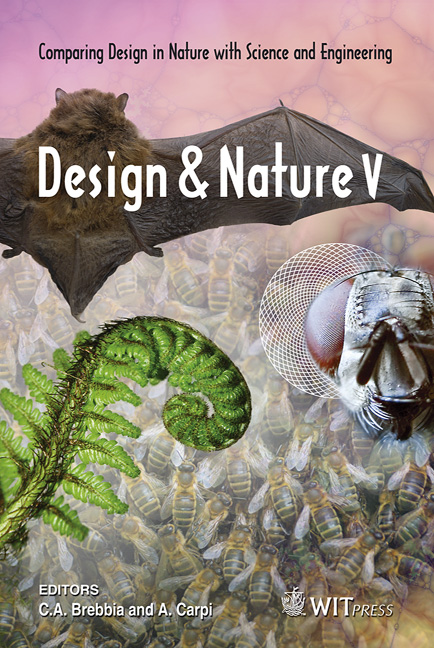The Hierarchical Structure Of Seashells Optimized To Resist Mechanical Threats
Price
Free (open access)
Transaction
Volume
138
Pages
12
Page Range
141 - 152
Published
2010
Size
3,599 kb
Paper DOI
10.2495/DN100131
Copyright
WIT Press
Author(s)
M. Yourdkhani, D. Pasini & F. Barthelat
Abstract
The vast majority of mollusks grow a hard shell for protection. Typical seashells are composed of two distinct layers, with an outer layer made of calcite, which is a hard but brittle material, and an inner layer made of a tough and ductile material called nacre. Nacre is a biocomposite material that consists of more than 95% of tablet-shaped aragonite, CaCO3, and a soft organic material as the matrix. Although the brittle ceramic aragonite constitutes a high volume fraction of nacre, its mechanical properties are found to be surprisingly higher than those of its constituents. Calcite and nacre, two materials with distinct structures and properties, are believed to be arranged in an optimal fashion to defeat attacks from predators. This paper aims at capturing the design rules of a gastropod seashell by using multiscale modeling and optimization techniques. A two-layer finite element model of the seashell was developed to include shell geometry at the macroscale, whereas nacre material properties were modeled at the microscale. A representative volume element of the microstructure of nacre was used to formulate a closed-form expression of the elastic modulus of nacre, and a multiaxial failure criterion as a function of the key dimensions of the microstructure. Using the seashell model, the maximum load that the shell can carry at its apex was obtained and different failure modes were introduced. The results from optimization suggested that the natural seashell is optimally designed for resisting penetrations. Furthermore, experiments were performed on an actual shell of abalone to validate the results obtained from simulations and gain insight into the way that the shell fails under sharp penetration. Optimization and experimental results revealed that the shell shows its best performance when two modes of failure coincide within the structure. Keywords: seashell, multiscale modeling, representative volume element, failure criterion, nacre, multiscale optimization.
Keywords
seashell, multiscale modeling, representative volume element, failure criterion, nacre, multiscale optimization





